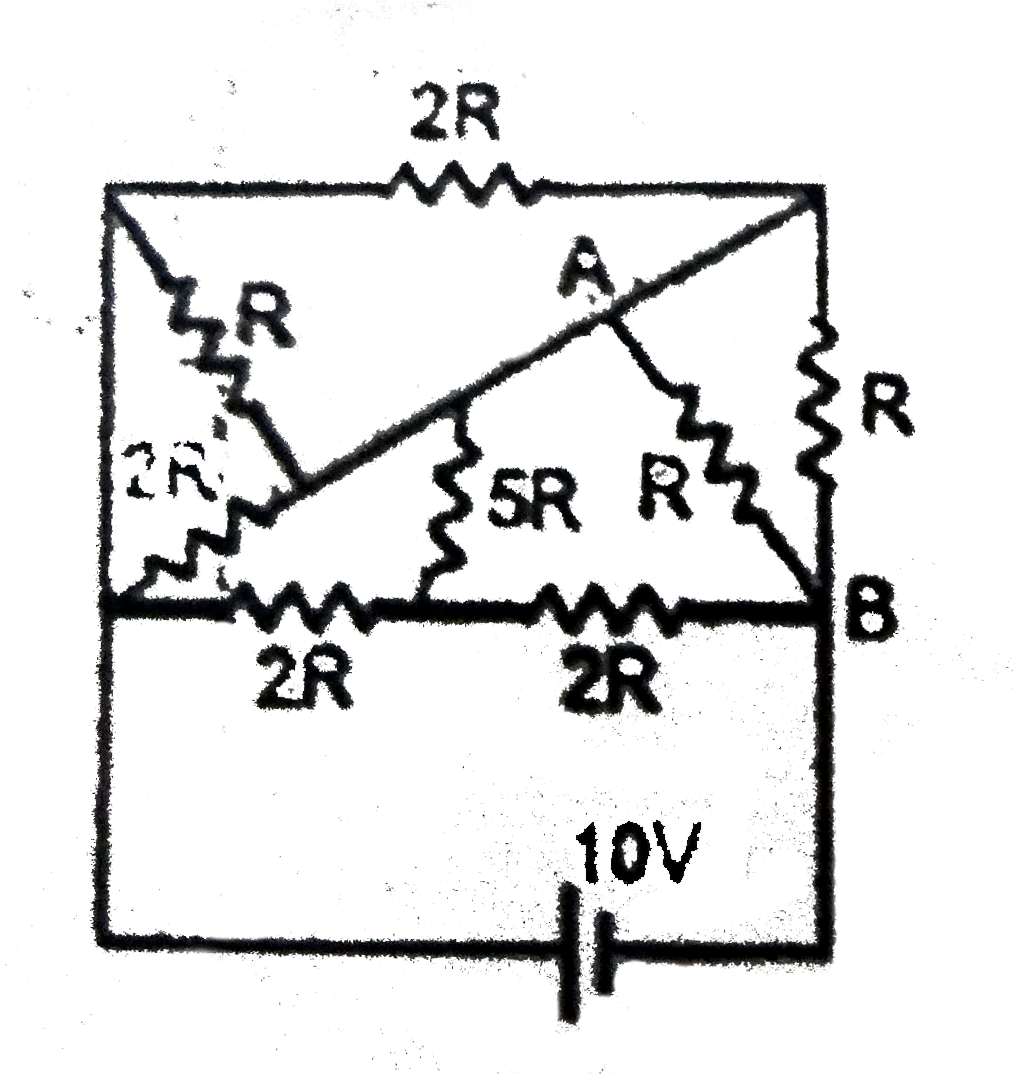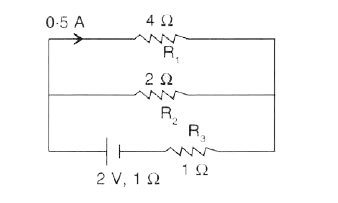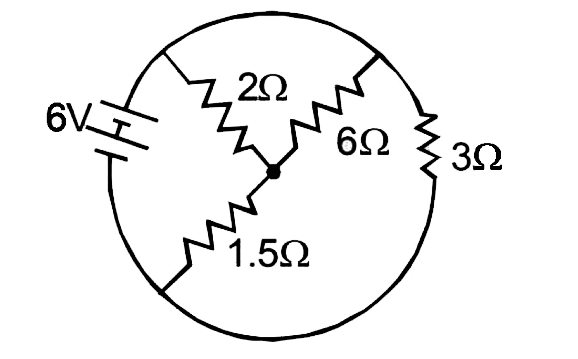In an electric circuit containing a battery,the charge (assumed positive )inside the battery.
(a) always goes from the positive terminal to the negative terminal
(b)may go form the positive terminal to the negative terminal
(c )always goes form the negative terminal to the positive terminal
(d)does not move
The correct Answer is:B
To solve the question regarding the movement of positive charge inside a battery in an electric circuit, we can follow these steps:
1. Understand the Battery Structure:
- A battery has two terminals: a positive terminal and a negative terminal. The positive terminal is where the positive charge is considered to be higher in potential, while the negative terminal is at a lower potential.
2. Identify Charge Movement:
- In an electric circuit, electrons (which are negatively charged) flow from the negative terminal to the positive terminal when the circuit is closed. This is due to the electric field created by the battery.
3. Relate Positive Charge Movement to Electron Movement:
- Since positive charge is considered to move in the opposite direction to that of electrons, we can deduce the movement of positive charge inside the battery.
4. Determine Direction of Positive Charge:
- While electrons move from the negative terminal to the positive terminal outside the battery, the positive charge inside the battery will move from the negative terminal to the positive terminal.
5. Conclusion:
- Therefore, the positive charge inside the battery moves from the negative terminal to the positive terminal.
Final Answer:
The positive charge inside the battery moves from the negative terminal to the positive terminal.
- A battery has two terminals: a positive terminal and a negative terminal. The positive terminal is where the positive charge is considered to be higher in potential, while the negative terminal is at a lower potential.
- In an electric circuit, electrons (which are negatively charged) flow from the negative terminal to the positive terminal when the circuit is closed. This is due to the electric field created by the battery.
- Since positive charge is considered to move in the opposite direction to that of electrons, we can deduce the movement of positive charge inside the battery.
- While electrons move from the negative terminal to the positive terminal outside the battery, the positive charge inside the battery will move from the negative terminal to the positive terminal.
- Therefore, the positive charge inside the battery moves from the negative terminal to the positive terminal.
The positive charge inside the battery moves from the negative terminal to the positive terminal.
Topper's Solved these Questions
- ELECTRIC CURRENT IN CONDUCTORSBOOK - HC VERMA ENGLISHCHAPTER - ELECTRIC CURRENT IN CONDUCTORSEXERCISE - objective 2
9 Videos
- ELECTRIC CURRENT IN CONDUCTORSBOOK - HC VERMA ENGLISHCHAPTER - ELECTRIC CURRENT IN CONDUCTORSEXERCISE - Exercises
84 Videos
- ELECTRIC CURRENT IN CONDUCTORSBOOK - HC VERMA ENGLISHCHAPTER - ELECTRIC CURRENT IN CONDUCTORSEXERCISE - worked out Example
33 Videos
- DISPERSION AND SPECTRABOOK - HC VERMA ENGLISHCHAPTER - DISPERSION AND SPECTRAEXERCISE - Question for short Answer
6 Videos
- ELECTRIC CURRENT THROUGH GASESBOOK - HC VERMA ENGLISHCHAPTER - ELECTRIC CURRENT THROUGH GASESEXERCISE - Short answer
6 Videos
Similar Questions
Assertion : In a simple battery circuit the point of lowest potential is positive terminal of the battery.
Reason : The current flows towards the point of the higher potential as it flows in such a circuit from the negative the positive terminal.
View SolutionIn the given electrical circuit, the potential difference between point A and B is (assume the battery is ideal and the conducting wires have almost zero resistance):

View Solutionthe current in a circuit containing a battery connected to 2Ω resistance is 0.9A. When ana additional resistance of 8Ω is connected to the same battery the current observed in the circuit is 0.3A. Then the internal resistance of the battery is xΩ. Find value of x.
View Solutionthe current in a circuit containing a battery connected to 2Ω resistance is 0.9A. When ana additional resistance of 8Ω is connected to the same battery the current observed in the circuit is 0.3A. Then the internal resistance of the battery is xΩ. Find value of x.
View SolutionA constant current exists in an inductor coil connected to a battery. The coil is short circuited and the battery is removed. Show that the charge flown through the coil after the short circuiting is the same as that which flows in one time constant before the short circuiting.
View SolutionIn an electric circuit shown alongside, find

terminal voltage of the battery
View SolutionThe total current supplied to the circuit by the battery is

View SolutionA capacitor of capacitance C which is initially charged up to a potential differnce ε is connected with a battery of emf ε2 such that the positive terminal of the battery is connected with the positive plate of the capacitor. Find the heat loss in the circuit the process of charging.
View SolutionIn the circuit, all capacitor are identical, each of capacity 2μF and they are infinite in number. If AB is connected to a battery of 10V then the charge drawn from the battery is :

View SolutionA capacitor of capacitance C, which is initially charged up to a potential differnce ε, is connected with a battery of emf ε/2 such that the positive terminal of the battery is connected with the positive plate of the capacitor. After a long time.
i. find the total charge flow through the battery
ii. find the total work done by the battery
iii. Find the heat dissipated in the circuit during the process of charging.
View Solution
